

| Circe
| Thursday, July 16, 2009 My first order of business was to build a new access ladder into the interior, something that would be decent enough to perform throughout the duration of the project. I built the new ladder from scrap 2x4 lumber, and designed it so that it hooked over the companionway opening for security while remaining easily removable for access as needed. Incredibly, this consumed an hours' time, but I'd need the ladder for many months. Later, when it came time to remove the existing cabin sole, I'd come up with a way to support the bottom of the ladder; for now, it could rest on the old sole, which I planned to leave in place for the moment to ease access to the interior. |
|
With the new ladder complete, I got to work removing the settees--hence the reason for requiring a new ladder, as with the settees removed so went the support system for the original ladder. The settees came out easily and quickly with grinding wheel, reciprocating saw, and persuasion. I cut the plywood sections into manageable pieces and added them to the debris pile outdoors. How quickly one can reduce a boat interior to a pile of firewood. But one should not be fooled: rebuilding is exponentially more time-consuming. |
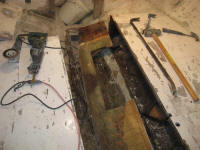
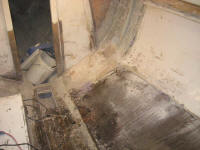
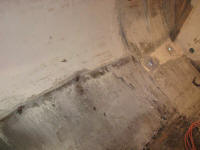 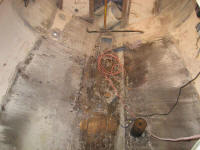
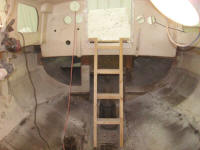
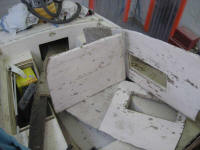 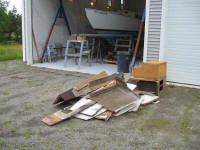 |
|
With that, the entire interior was gone, and with it went the water-sodden, oil-soaked reminders of the boat's past. To continue, I removed an old depth sounder housing, featuring a plastic pipe filled with water and oil, which I had to sop up and drain before removing the assembly. |
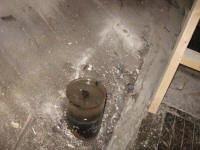 |
|
I scraped up the thickest of the oily, dirty debris that had been beneath the settees--these areas had been basically inaccessible during my previous cleaning efforts, since the drawers had been swollen in place and only later succumbed to removal efforts with a prybar. Then, I degreased the raw fiberglass with acetone and lots of rags. I spent the remainder of the day grinding and sanding out the entire saloon, up to deck level. I used a large grinder to remove the tabbing edges remaining from the settee and bulkhead removal, and then removed paint and cleaned up all the surfaces to remove rough edges, smooth out the sloppy resin runs (there was only so much I could to to correct some workers' 43 year-old sloppiness) and otherwise prepare the surfaces for future rebuilding and finishing efforts. This wrapped up most of the bulk paint removal and sanding in the interior, though there was still plenty of preparatory work ahead, and some of the adjacent spaces still required sanding (cockpit lockers, engine room, bilge, and chainlocker). Afterwards, I cleaned up the 5 gallons of sanding dust, which I'd swept into the bilge for ease of collection, and vacuumed the interior to remove the worst of the remaining dust. I cleaned up the shop a bit, and prepared to transition from demolition mode to the next stage of the project, which would include additional surface preparation and paint removal on the remainder of the boat. |
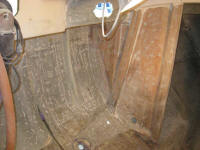
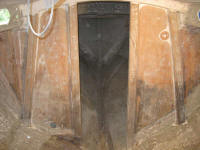
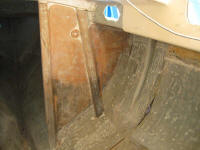 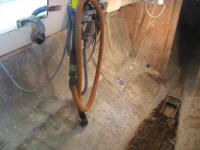
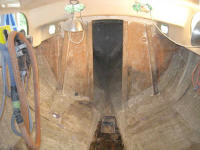
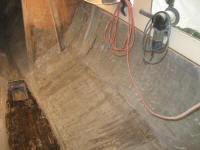 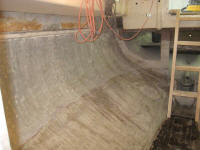
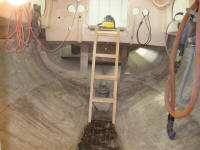
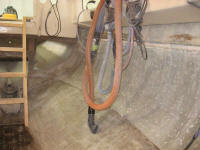 |
|